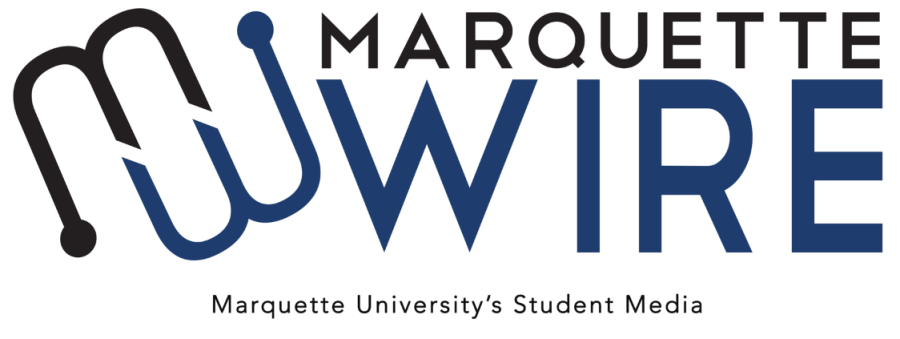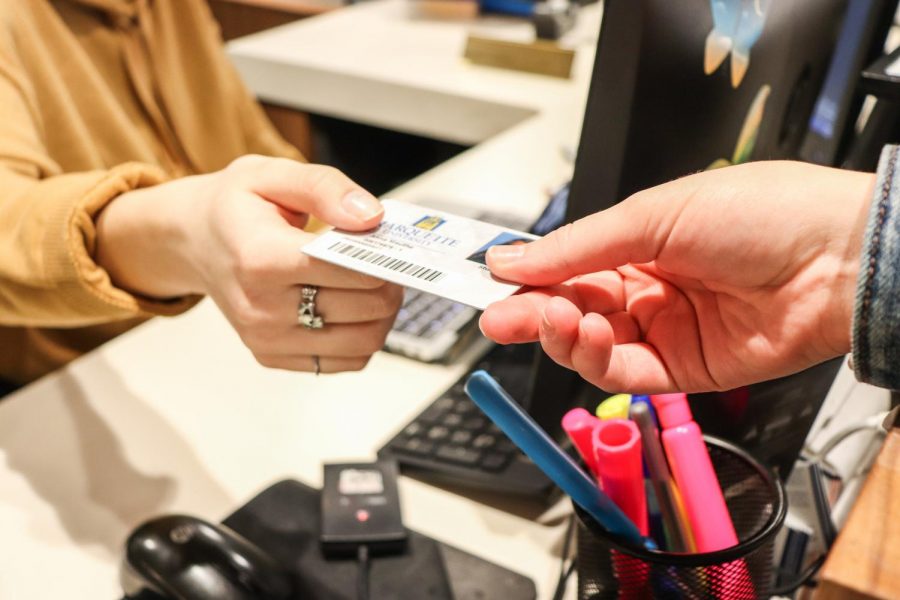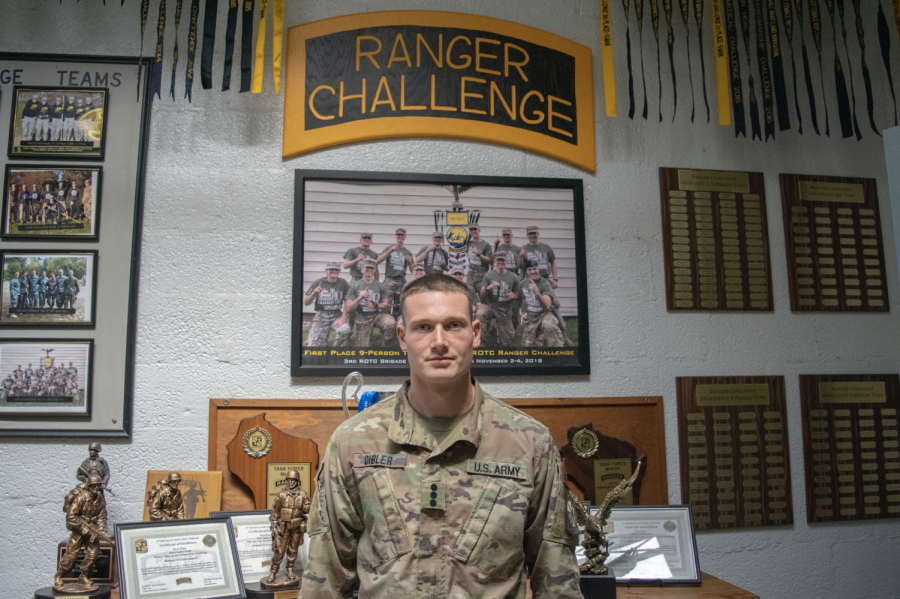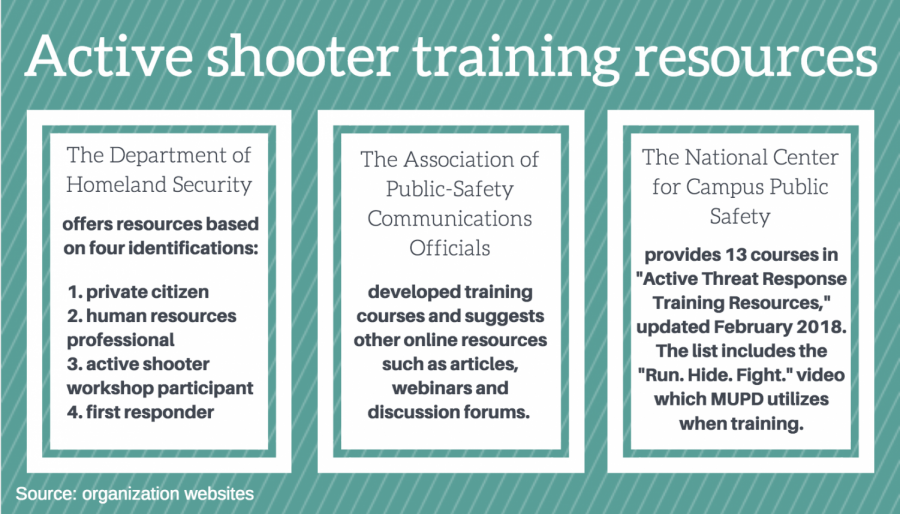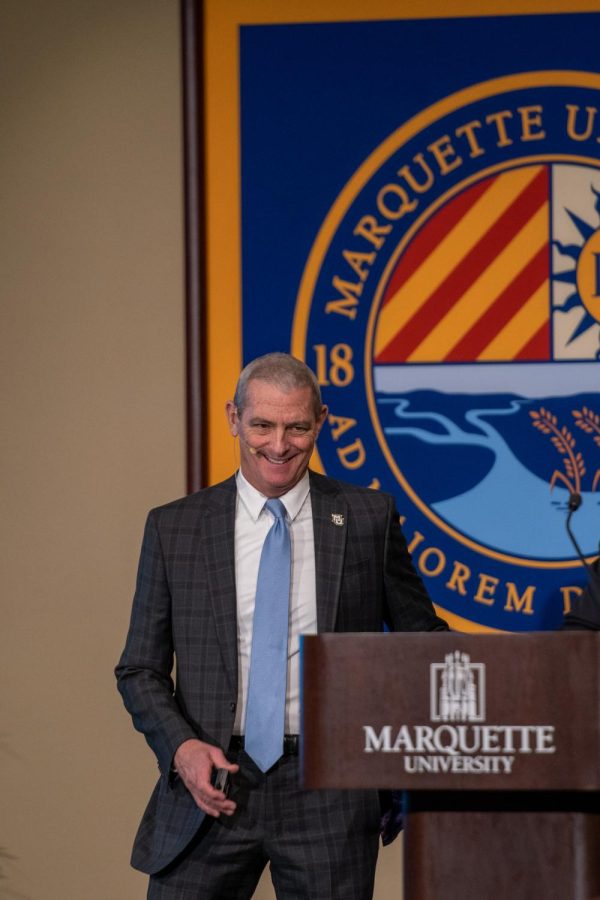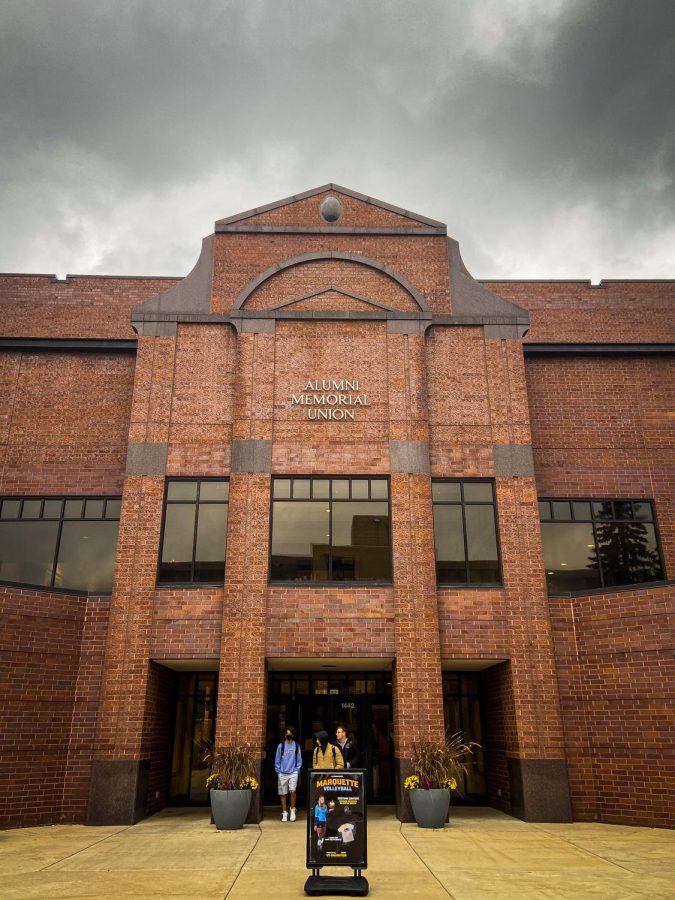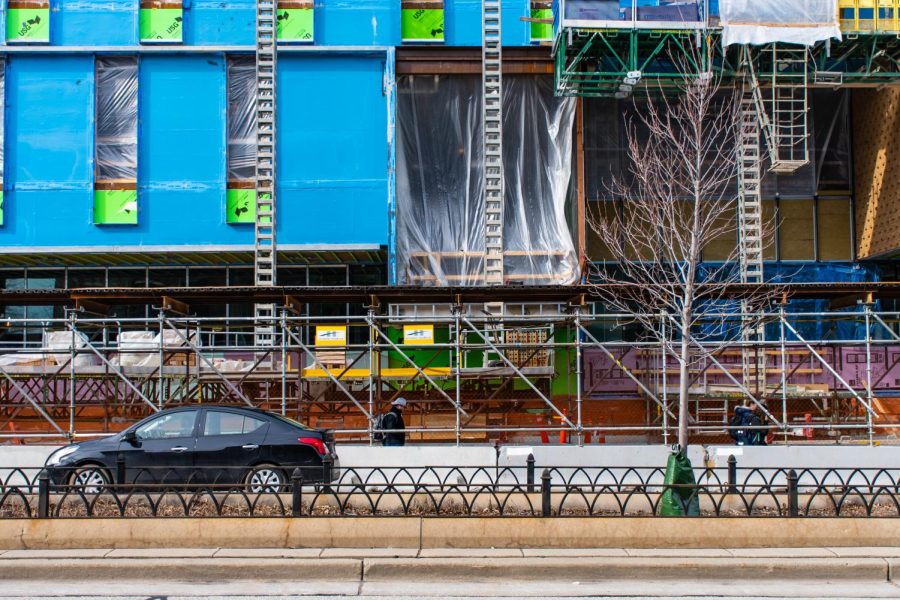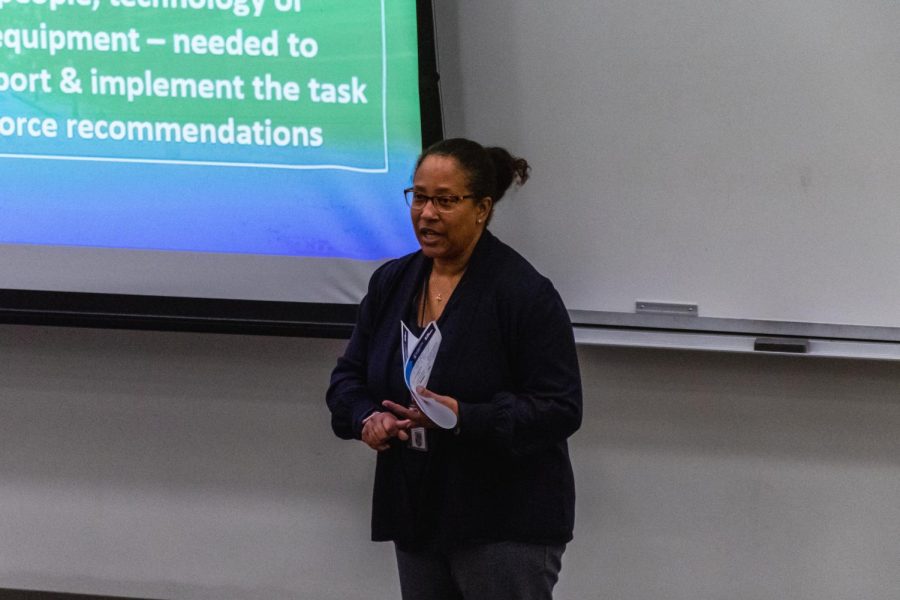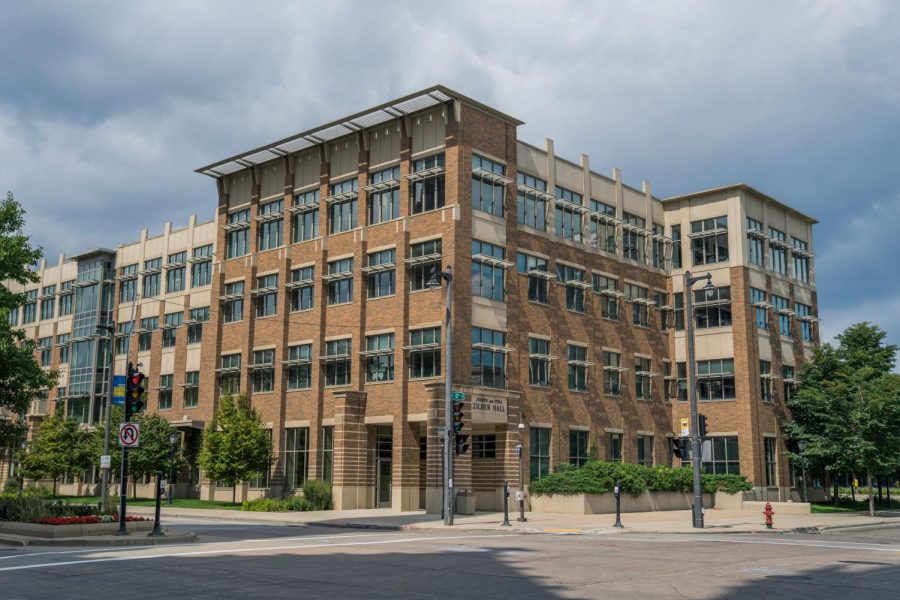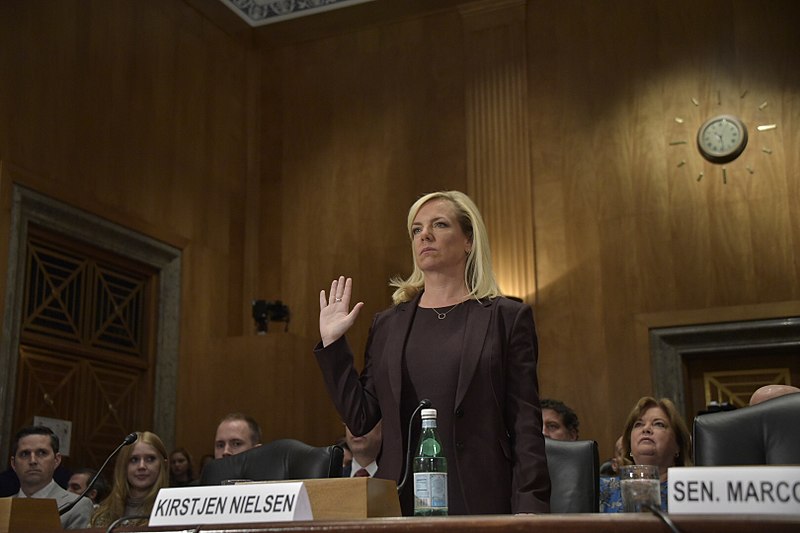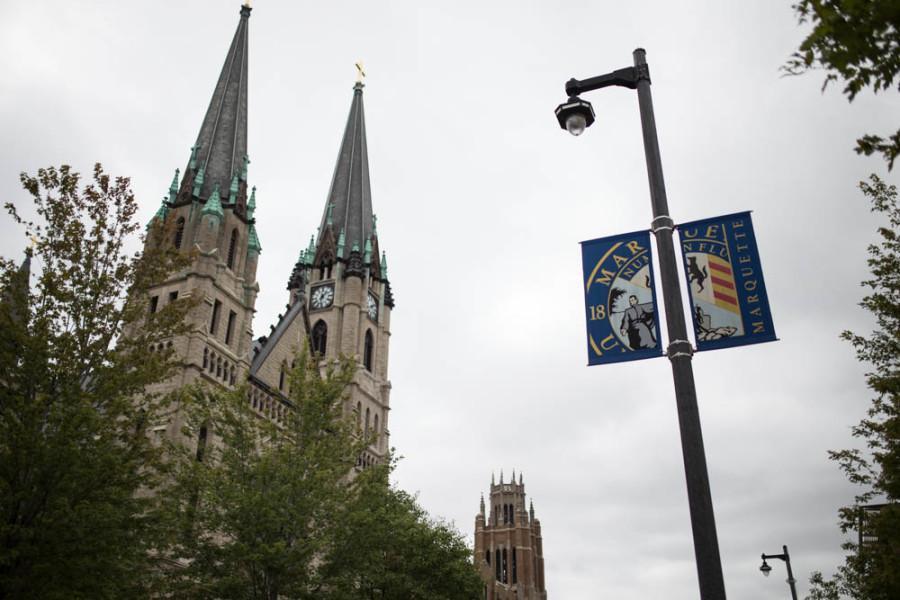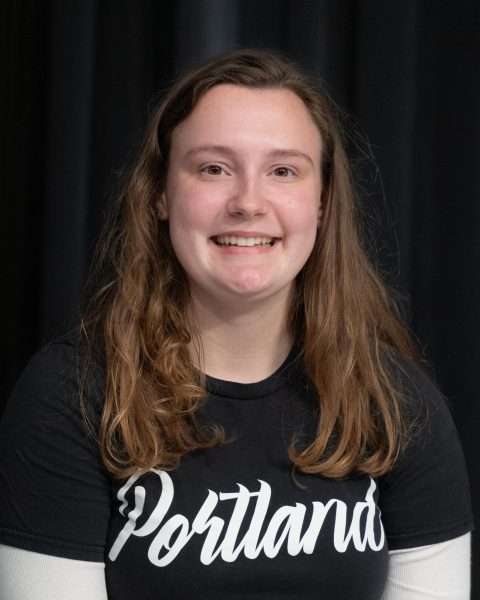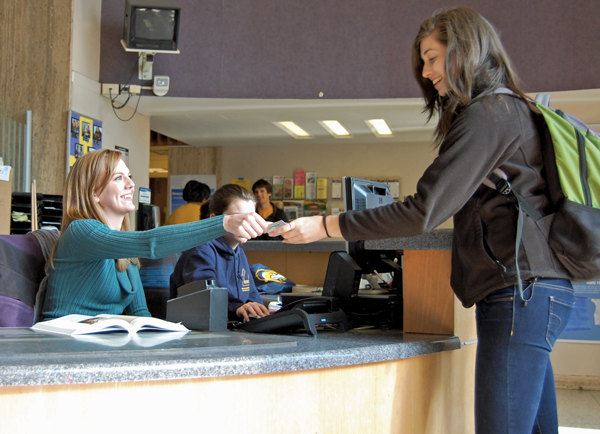
In the event of an active shooter situation on campus, the Marquette University Police Department has a short set of instructions, only three words: ‘run, hide or fight.’
“Unfortunately there are harsh realities, such as an active shooter situation that we must be prepared for. Thankfully these instances are rare but understanding the best way to protect yourself and others, should an active shooter situation arise, can save lives,” Edith Hudson, chief of MUPD, said in the introductory active shooter training video.
Last year Wisconsin had a recent number of 10 mass shootings resulting in the death of 11 individuals and injuring 42.
MUPD offers two forms of active shooter training, one online or one in-person presentation. Both forms of training are designed in line with the Department of Homeland Security’s recommendations.
“The online training provides the information and strategies we want students, faculty, and staff to have to reduce the danger of these events but it is not as collaborative as an in person training session. When we present in person it allows attendees the opportunity to ask questions and personalize the training for their specific needs,” Jeff Kranz, assistant chief of MUPD, said in an email.
Presentations are currently done by MUPD lieutenant Kevin Walz and are available to all members of the Marquette community. These presentations are done by request.
MUPD’s training goes through three different options for an active shooter situation. This is where “run, hide or fight” comes into play.
“The information we provide in our active shooter training (run hide fight) provides some of those tools. If we do not provide this strategy, people could freeze or make uninformed choices under stress that increase their danger instead of reducing it,” Kranz said in an email.
Run: this option states that you should evacuate the area if possible and leave any possessions behind. The training said evacuation should only be done if there is a “considerable” amount of space between yourself and the armed person. In addition, you should also alert authorities when it is safe to do so and not assume someone else already has.
Hide: this option should be used when you cannot evacuate safely. Instead, obscure yourself from the armed person’s vision. You should lock doors, turn off lights and silence any electronics. The training also instructed individuals to barricade the room with furniture, if possible, and make efforts to not be seen from outside the room.
Fight: this option should only be taken as a last resort and should only be used when one’s life is in immediate danger. In this event, one should attempt to incapacitate the shooter by using physical aggression or throwing objects.
“MUPD sees it as part of our responsibility to provide our community with tools needed to help them keep safe in the event they find themselves in dangerous situations,” Kranz said in an email.
Despite the positive impact MUPD claims this training will provide the Marquette community, active shooter training made available by MUPD is not required for all members of campus. It was required training for first-year students back in 2018 as a part of orientation. The class first-year class of 2019 also received this training. No first-year class since then has undergone mandatory active shooter training.
Current desk receptionists in residence halls receive active shooter training as part of their training. This began about six years ago, though resident assistants had been receiving the training for about two years prior to the implementation for desk receptionists.
Active shooter training isn’t the only resource desk receptionists have in the event of an unforeseen emergency or threat.
“We also get training on using the visitation system to know who is in the building as well as scanning people in. For anything else we just call MUPD. There is a handbook at the desk where a (desk receptionist) can look if anything happens. There is also a panic button at the desk,” Ana Aguilar, a sophomore in the College of Nursing and Schroeder Hall desk receptionist, said.
The panic button acts similarly to the blue light system available on campus. When the button is pressed it automatically alerts MUPD. Then, squads are sent to that exact location.
Kranz used to be the officer to give active shooter presentations. Although he no longer does it,. he said the experience allowed him to help connect further with members of the Marquette community.
“While it is a difficult topic to talk about, I enjoyed the opportunity to work with the Marquette community in developing safety plans. It allowed me the chance to get into people’s space on campus and work together to create solutions to this challenging issue. It also opened doors to other discussions related to safety and policing at Marquette,” Kranz said in an email.
This story was written by Megan Woolard. She can be reached at [email protected]


